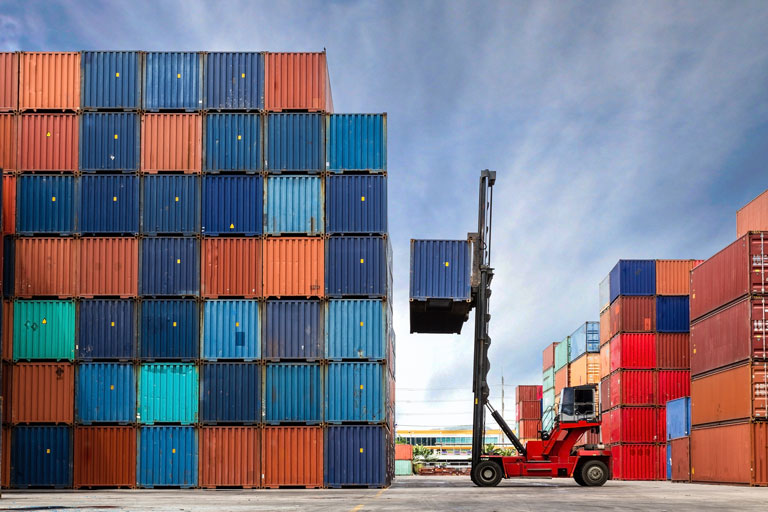Supply Chain 5.0: How To Diversify Supply Chains In 2024
In Part 1 of our Supply Chain Transformation Series, Kawal Preet shares tips on how diversified supply chains can build resilience – and how to build multi-dimensional supply networks in 2024.
At FedEx, our role is to map emerging patterns and trends in supply chains around the world, guided by insights from real-time data. The closer we track how commerce is changing, the better and faster we can anticipate and meet our customers' needs.
In recent years, conventional supply chains have been upended many times over. With geopolitical disruption, shifting global trends and a macro-economic environment in constant flux, businesses need to evolve. Companies of all sizes are recognizing that they need to recalibrate their supply chains to stay competitive.
Here are our takeaways for businesses considering supply chain diversification in 2024:
1. Today’s agile supply chains are multi-dimensional – and supported by tech
Businesses have learned the hard way on supply chain disruption in recent decades. Many companies no longer rely on just one major market or supplier, but a strategic stack of multi-dimensional supply networks.
The smart roadmap to resilience? Decrease over-reliance on one source or specific geography. And the more elasticity built into your supply chain, the better it can withstand external shocks and recover quickly from them.

Part of adapting with agility means being prepared for anything. Corporate crisis and risk planning today typically involves intense scenario planning, including black swan events and extreme weather.
What’s different about risk management in 2024 is that it has evolved in step with tech acceleration. That means that research, modelling, and forecasting for how to diversify your supply chain - and in which direction - can now be assisted by tech and AI-led solutions.
The availability of tech as not just a tool, but an integrated planning partner, means that greater visibility is possible. And the more options you have, the easier it is to diversify at speed and at scale.
2. Consumer trends and purchase habits are creating new rhythms for how we ship
The retail period between Double 11 and Christmas to Lunar New Year is what we used to call our ‘peak season’. But thanks to e-commerce, that’s no longer accurate. While there is a B2C peak across the turn of the year, new, year-round demand spikes have emerged, leading to complexities in demand forecasting and planning. And large e-commerce platforms and players like Shein, TikTok and Temu are driving those shifts.

Faced with a series of smaller peaks and plateaus from season to season, your supply chain strategy needs to adapt. In this environment, traditional ‘just in time’ delivery methods make less sense.
‘Just in case’ and ‘build to forecast’ supply chains, characterized by quicker lead times and higher service volumes, are much more resilient for our e-commerce-first landscape. Keeping multiple players on the books means you can meet demand, even when it arises unexpectedly.
3. More businesses are making Southeast Asia a crucial component of their supply chain
For Asia and the world, China remains a leading assembly and supply chain hub, accounting for about 30% of global manufacturing output.
Supply chain diversification is not about China versus Southeast Asia, or China versus India, or other specific markets like Vietnam.
But the reality is that geopolitical risks and China’s rising costs are accelerating the need for supply chain diversification. Companies that once focused largely on China are diversifying and creating more manufacturing facilities elsewhere.
Southeast Asia is a clear beneficiary, having become a leading player in an evolving supply chain universe. This is particularly true of Vietnam, a growing manufacturing hub for increasingly higher-value goods and services.
At FedEx, we’re leaning into these shifts. We launched new flights between Ho Chi Minh City and our Asia Pacific hub in Guangzhou, connecting the region’s businesses to Asia and Europe with much faster transit times.
Elsewhere in Southeast Asia, other markets are emerging as high-value players. We see the continued importance of locations like Singapore as a medical and technology hub. Indonesia’s low-cost structure and global trade connectivity, combined with an internet penetration rate of 77% and a fast-developing e-commerce market, is offering many new options to diversify as well.

One other diversification trend in Asia is that supply chains are now extending beyond major city centers. In the Eastern Economic Corridor in Thailand, the number of automotive industry players is on the rise.
In Cebu, Philippines, there’s significant Japanese manufacturing investment in electronics. And in Central Java, Indonesia, there are new growth opportunities in the textiles and garment sector.
So whether it’s a ‘China + 1’ or ‘China plus many’ approach, businesses will continue to reconfigure China-centric regional supply chains for the foreseeable future.
Supply chain diversity will strengthen Asia’s business and trade opportunities
Ultimately, supply chain shifts are strengthening intra-Asia flows or movement of goods. And the accelerating implementation of trade deals like the ASEAN Free Trade Agreement or the Regional Comprehensive Economic Partnership is providing a further boost.
The bottom line: more options mean greater opportunity for SMEs, and room for new players to enter the field.
***




















 The Latest
The Latest